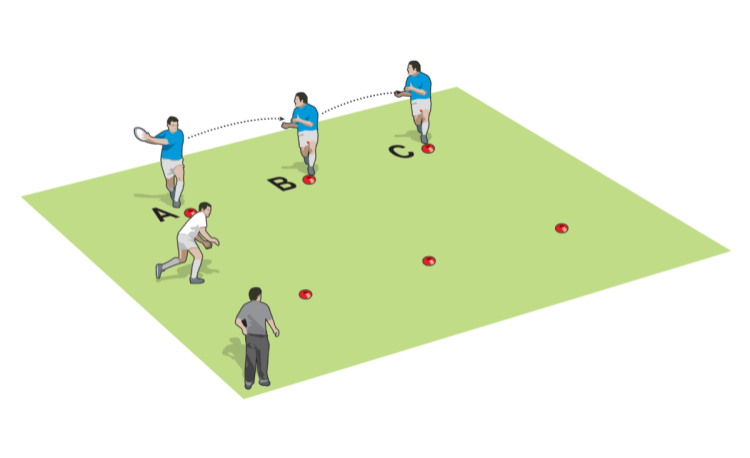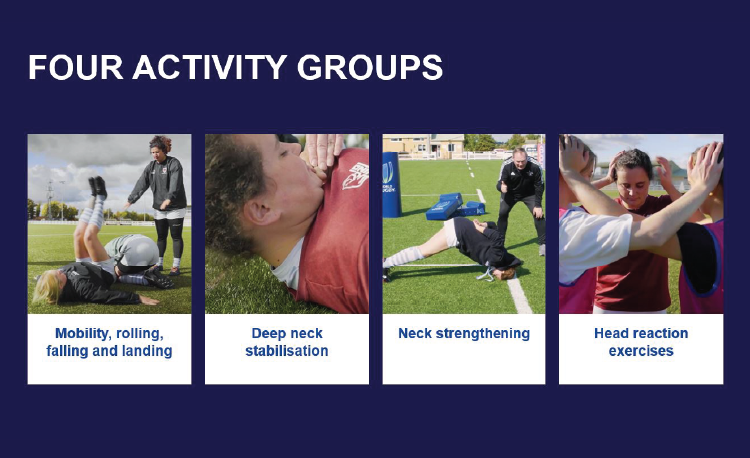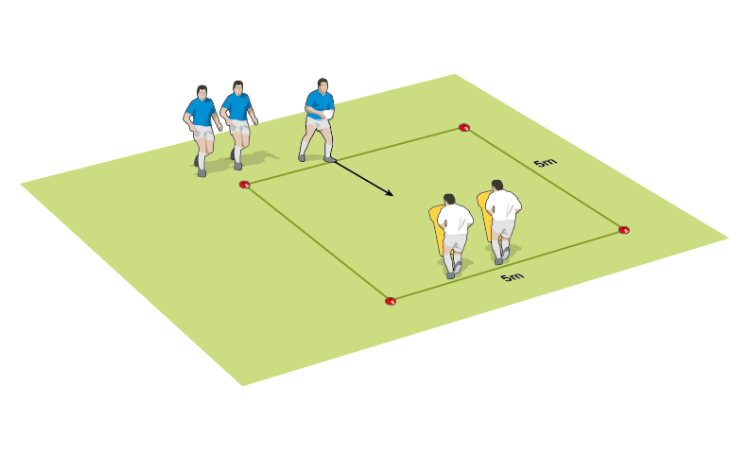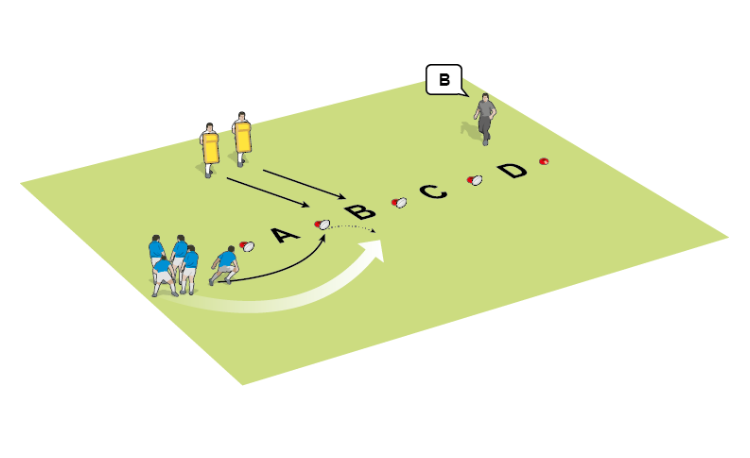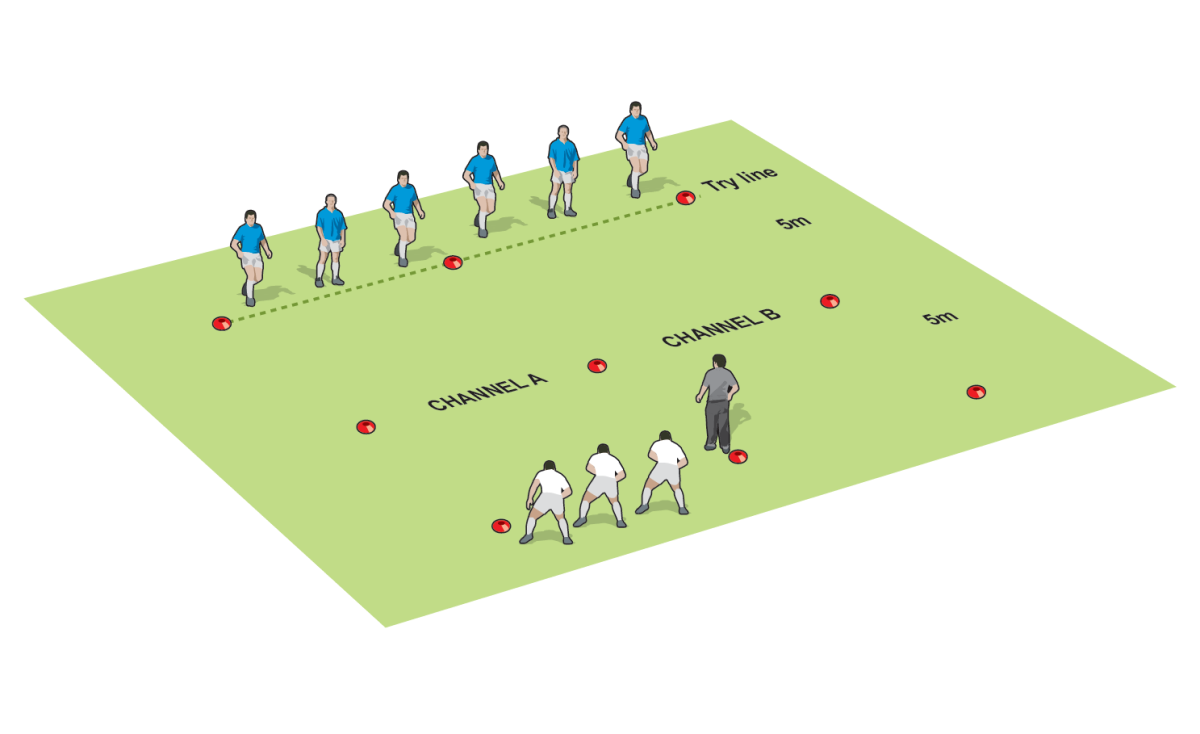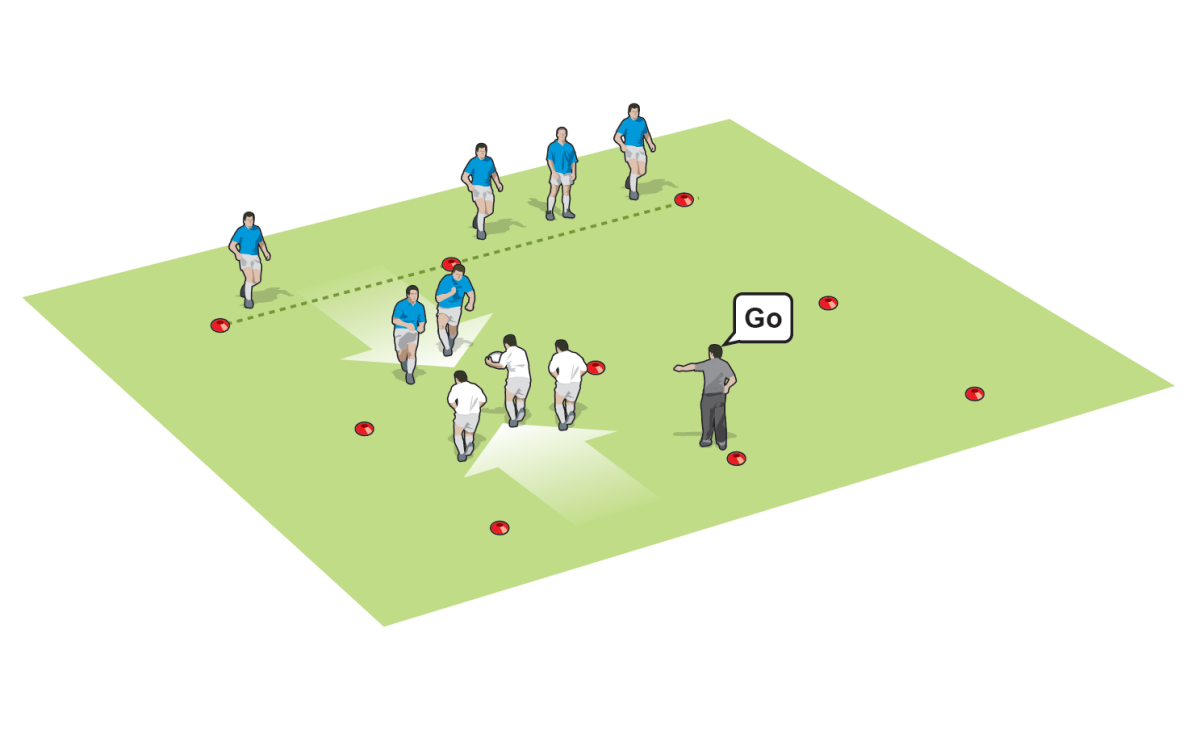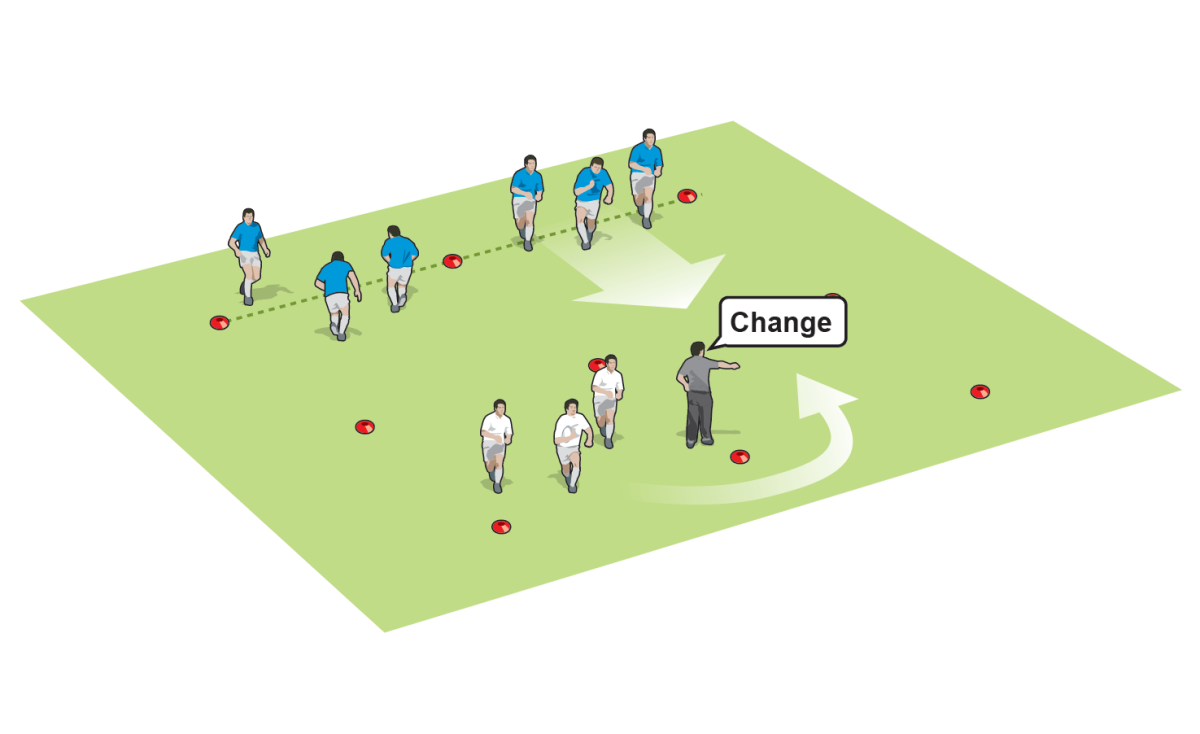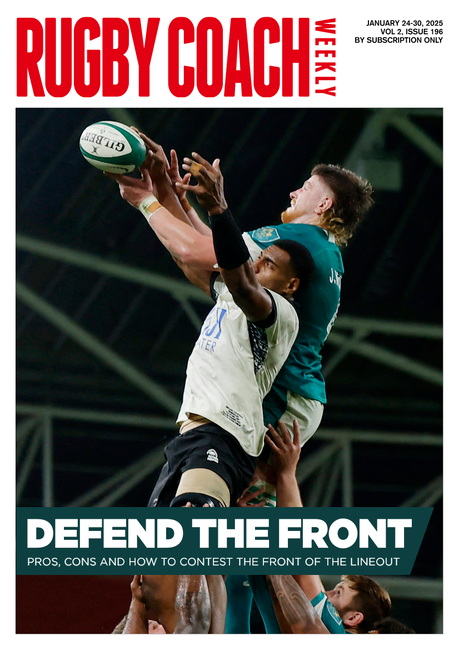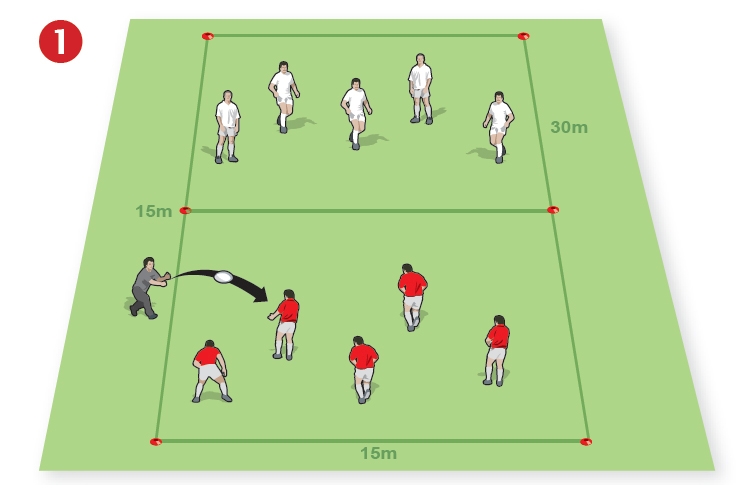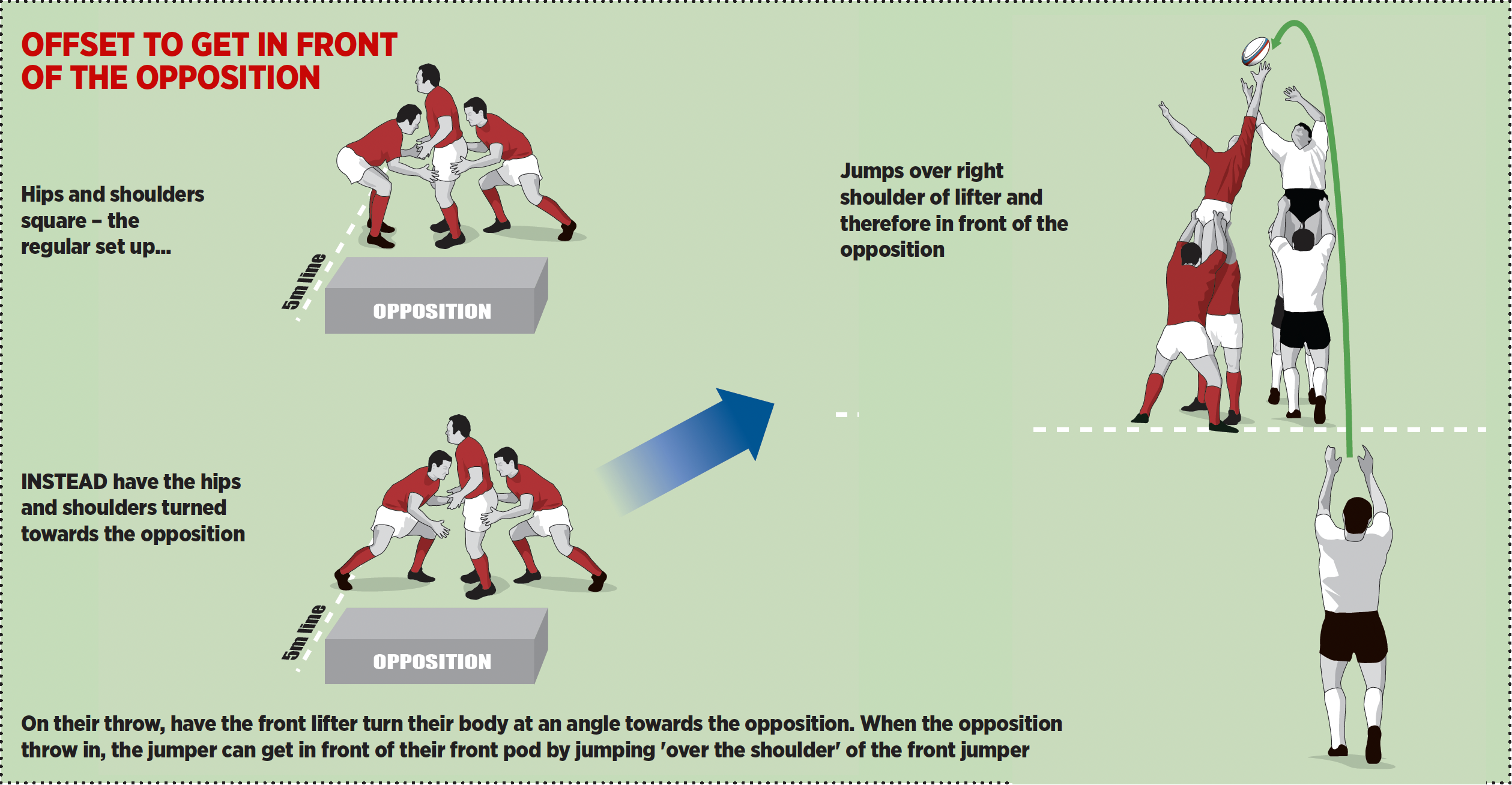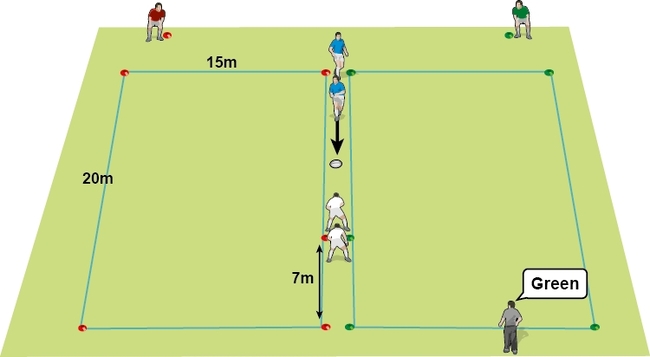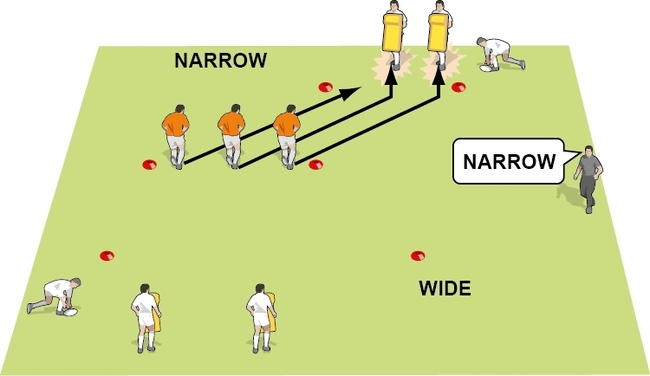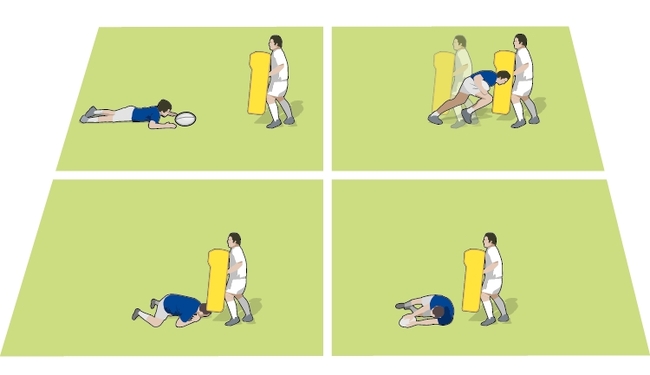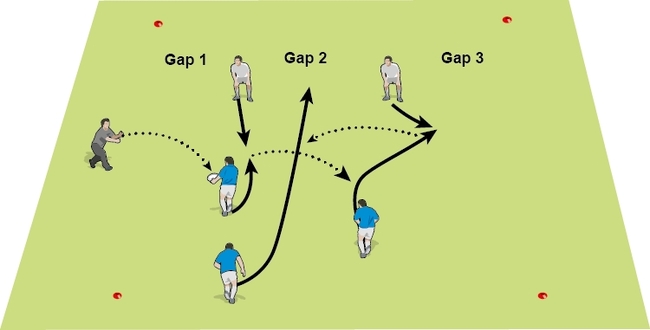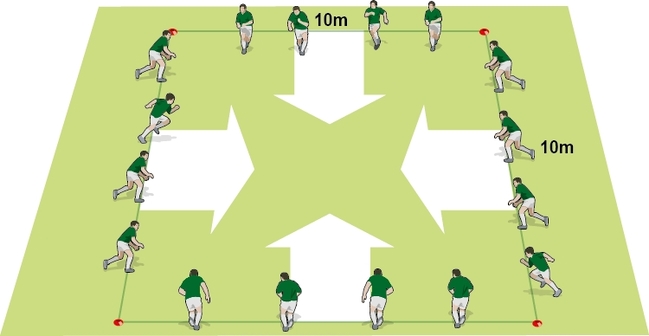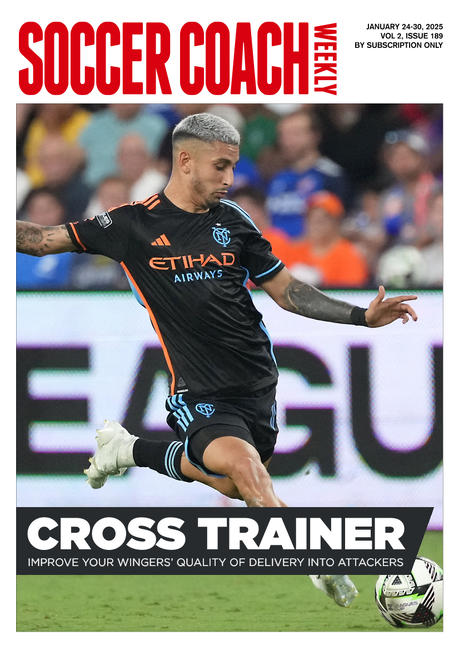Contact decisions
Have players assess their options before contact to ensure they win possession and retain the ball for the next phase or just go forward.
WHY USE IT
The key question here is: Does the ball carrier have to take the ball into contact if they can help it?
SET UP
Two 5m wide, 10m long channels and a ball.
HOW TO PLAY
Put three players with a ball in one channel and three defenders at the end of each channel. Stand with your back to the attack and secretly indicate to the defence, by holding fingers up in front of you, how many defenders you wish to oppose them. When you say “Go!”, the attackers try to score a try. When you say “Change!”, the three attackers run back to the start of the next channel and you change the numbers you want to see in defence. Keep the activity going until you see regular success (scoring a try) or until it becomes apparent that one technique is not allowing the team to be successful. Either through questioning or group discussion, identify improvements and repeat. Rotate the players and then develop with wider channels and more players in each channel.
COACHING POINTS
- Attack edges of defenders.
- Give confidence to the ball carrier with accurate communication.
- Identify threats to the ball and deal with them.
1. Put two groups of three defenders at the end of each channel
2. Put a group of three attackers in the first channel
Related Files
3. Secretly indicate how many defenders to come forward
4. The attackers aim to beat the defenders
5. Release up to three defenders and repeat
6. At any point, shout “change” and the attackers run behind you into the next box
Newsletter Sign Up
Coaches Testimonials

Gerald Kearney, Downtown Las Vegas Soccer Club

Paul Butler, Florida, USA

Rick Shields, Springboro, USA

Tony Green, Pierrefonds Titans, Quebec, Canada
Subscribe Today
Be a more effective, more successful rugby coach
In a recent survey 89% of subscribers said Rugby Coach Weekly makes them more confident, 91% said Rugby Coach Weekly makes them a more effective coach and 93% said Rugby Coach Weekly makes them more inspired.
Get Weekly Inspiration
All the latest techniques and approaches
Rugby Coach Weekly offers proven and easy to use rugby drills, coaching sessions, practice plans, small-sided games, warm-ups, training tips and advice.
We've been at the cutting edge of rugby coaching since we launched in 2005, creating resources for the grassroots youth coach, following best practice from around the world and insights from the professional game.
